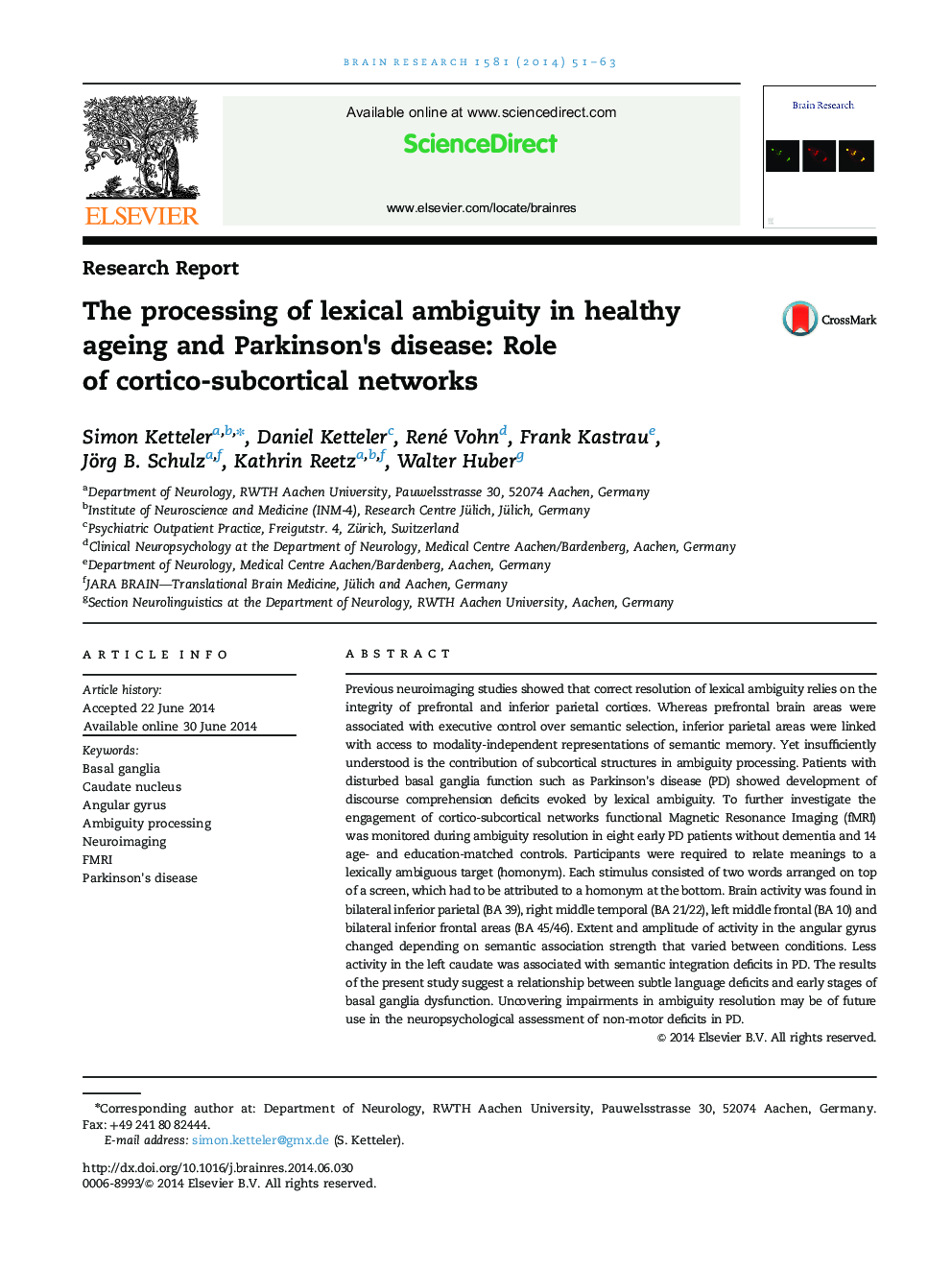| Article ID | Journal | Published Year | Pages | File Type |
|---|---|---|---|---|
| 4324172 | Brain Research | 2014 | 13 Pages |
•We investigate lexical ambiguity processing in ageing and Parkinson׳s disease.•Semantic integration is hampered in Parkinson׳s disease.•Decreased caudate activity was associated with deficits in semantic integration.
Previous neuroimaging studies showed that correct resolution of lexical ambiguity relies on the integrity of prefrontal and inferior parietal cortices. Whereas prefrontal brain areas were associated with executive control over semantic selection, inferior parietal areas were linked with access to modality-independent representations of semantic memory. Yet insufficiently understood is the contribution of subcortical structures in ambiguity processing. Patients with disturbed basal ganglia function such as Parkinson׳s disease (PD) showed development of discourse comprehension deficits evoked by lexical ambiguity. To further investigate the engagement of cortico-subcortical networks functional Magnetic Resonance Imaging (fMRI) was monitored during ambiguity resolution in eight early PD patients without dementia and 14 age- and education-matched controls. Participants were required to relate meanings to a lexically ambiguous target (homonym). Each stimulus consisted of two words arranged on top of a screen, which had to be attributed to a homonym at the bottom. Brain activity was found in bilateral inferior parietal (BA 39), right middle temporal (BA 21/22), left middle frontal (BA 10) and bilateral inferior frontal areas (BA 45/46). Extent and amplitude of activity in the angular gyrus changed depending on semantic association strength that varied between conditions. Less activity in the left caudate was associated with semantic integration deficits in PD. The results of the present study suggest a relationship between subtle language deficits and early stages of basal ganglia dysfunction. Uncovering impairments in ambiguity resolution may be of future use in the neuropsychological assessment of non-motor deficits in PD.
